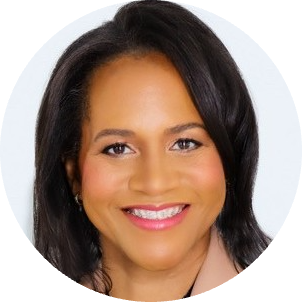A CEO’s guide to hiring a Chief AI Officer

The emerging role of the Chief AI Officer (CAIO) has been steadily increasing in importance since the boom of generative AI. The sense of urgency around this role grew further when The White House announced at the end of March its plans to force federal agencies to name CAIOs, and establish AI governance boards.
While it’s the public sector, it’s a reminder of how organizations should respond to the new technology as they work to determine its place within their businesses. Some companies have welcomed the announcement as a useful guide for the private sector.
“I appreciate the fact The White House has weighed in on this because it really does highlight the importance of having an informed and holistic view about using tools and technologies within organizations,” said Koma Gandy, employee development platform Skillsoft’s vp of leadership and business. “Having that recognition can be an impetus to organizations who might have been dragging their feet or not really treating it as something where they need to direct time and resources to really take it seriously.”
But how exactly does an organization determine whether they need a CAIO? And if they do — then who is that person? Are they hired internally or externally? Do they need to be in the C-suite or can they be vp or director level? How do they work with the chief data officers, chief technology officers, chief information security officers, and other related technology roles?
We spoke with a range of experts to answer those questions.
Do I need a CAIO?
For most companies, the short answer is yes.
But, this question depends on the industry and size of an organization. If you’re in the technology sector, the answer will almost always be yes. However, if you have a smaller company, it might be a case of wanting a CAIO but not knowing where to find the budget to fill this role.
“I recognize that you can’t create a magical budget overnight and be able to add that,” said Gandy.
Some companies have determined that it’s easier to give the responsibilities that a CAIO would have to a different C-suite position instead, like the CDO, CTO, or CISO. While this might work in the short-term, experts say it’s necessary to have someone who is dedicated to AI.
“If you’re offering AI services, you’re going to need, and want as a business, some level of responsibility there,” said Jim Palmer, CAIO at customer intelligence platform Dialpad. “I like having it at the chief level specifically because you’re connecting so many different parts of the business. You need to have someone who is going to be responsible for the AI.”
But not everyone is in the same part of their AI growth plan. Jennifer Reynolds, CEO of the Women Corporate Directors Foundation, said, “everyone is in a slightly different spot depending on what industry you’re in.”
Do they need the CAIO title or to be a part of the C-suite?
While it may be fairly critical to have someone at a senior level in a company who is focused on AI, does they need to be in the C-suite? Gandy argues maybe not, as long as they have access to the C-suite – in case they need their input quickly.
“Would it be wonderful to have a CAIO in every organization?,” said Gandy. “It would be great, but I do think even if they can’t create the new designation, they need to make sure someone doesn’t take on these responsibilities as a second or third hat.”
Having a point person that is not in the C-suite might be a go-to option for a smaller company or a company that is not wholly focused on AI or providing AI for its customers. For example, Harman Kaur is the vp of AI at Tanium, a converged endpoint management platform. She changed her C-suite position of chief of staff to a vp-level role so that someone was focused on AI.
Before she was in her new role, Tanium focused on setting up committees focused on AI, a popular method she’s seen in a lot of companies instead of having a pointed person lead the efforts. However, they quickly realized that it wasn’t working for them.
“There was a realization very quickly that we do need someone that is going to be a leader of our organization,” she said. “When it’s by committee, everyone is working on all different AI initiatives that don’t actually aggregate to much.”
In the last six to eight months the company made Kaur the point person. Now she’s able to dive into how AI benefits its customers and employees.
“There’s someone now who looks at it holistically across the board and product, instead of someone who thinks a chatbot is a really good idea and someone else who thinks making salespeople more productive using AI tools is more important,” said Kaur. “We also can focus on governance too.”
Reynolds also says that she’s seen a lot of heads of AI rather than CAIOs, which is another option for companies.
“That’s how I’m seeing a lot of people think about it,” said Reynolds. “Many companies who haven’t yet hired for this role are having this discussion. If you look at what CEOs are thinking about, one of their top priorities for sure is in the area of AI and thinking about what kind of talent they’re going to need there.”
Palmer says while that approach might make sense for smaller companies or ones not wholly focused on technology, those who are in the opposite boat should definitely have this position in the C-suite.
“I think having it as close to the business unit of the C-suite and still closely tied to the technology side of the business, if there is one, is important,” said Palmer.
Is this an internal or external hire?
If you’ve decided that your company would operate better with a CAIO or someone in a similar position, the next step is hiring. Who should that person be: someone familiar with the company who has worked there for years, or an outside AI expert?
The folks we talked to for this article said there is no right or wrong answer here. For example, Palmer was promoted from his position as vp of AI engineering to the CAIO in March as an internal move to replace a previous CAIO. Dialpad has had the CAIO role since 2022.
“I love the way we did it because it was internal and it just made sense during our acquisition,” said Palmer. “If you can do it internally, if you already have a strong AI team, that’s the easiest. But if you’re just starting out, this could vary from size and stage of company and industry as well.”
However, someone who comes in from outside the company might have fresh eyes and additional information that no one in the company currently has. In a way, this person almost acts like a consultant. “I’ve talked to several organizations who are bringing someone completely from the outside and all that person is doing is almost like auditing and figuring out where they can use AI potentially,” said Kaur.
Kaur said when answering this question of internal versus external hire, it’s helpful to ask what is most important to you as you incorporate AI into the company: “Is it increasing productivity? Do you have a skillset to help you achieve that? Or is it getting AI into your product?” Once you have the answer to that, it will be easier to figure out who should be in the role and at what level. At Tanium, they knew it was the latter, which meant they wanted someone internal to be in the role.
There isn’t really a one-size fits-all approach when it comes to this question.
“At this point, the role is so new,” said Reynolds. “We can’t say ‘oh the best ones come from this background.’ It’s evolving so quickly. That talent pool is new. It’s hard to find those people. It could be internal, and someone developing into the role, or maybe external. It has to be someone who will do the strategic thinking for the business.”
How does the CAIO operate within the C-suite?
A lot of people wonder how CAIOs will work alongside CTOs, CISOs, CDOs and so on. Are their roles too similar? Definitely not, the experts we spoke with said. For example, Dialpad has a CTO who is very technical, while Palmer as its CAIO is more focused on AI ethics, governance, and strategy. “It’s owning the AI story and responsibility,” said Palmer.
Palmer works closely with the CTO. And there is still a solid distribution of work and responsibility while maintaining that distinction between the roles.
“I don’t see CAIOs taking over the flow of information,” said Palmer. “I still see a big room for having all of those roles in one place at one time. But they have to work in concert. They have to work very well together. The most important part, especially if you’re hiring externally, is that the person knows how to work well with these other roles.”
While employers try to navigate this new technology, it can quickly feel that everything new with AI is intimidating. Gandy advises grabbing the bull by the horns.
“Companies shouldn’t be afraid to start on that journey,” said Gandy. “Just trying to make a plan to get there and recognizing that you’re on the way is better than doing nothing or being paralyzed by fear because you just don’t have the resources to create that chief AI officer spot or you’re not able to find that person in the organization. We all need to make progress. It’s OK if you can’t get perfect right away.”


